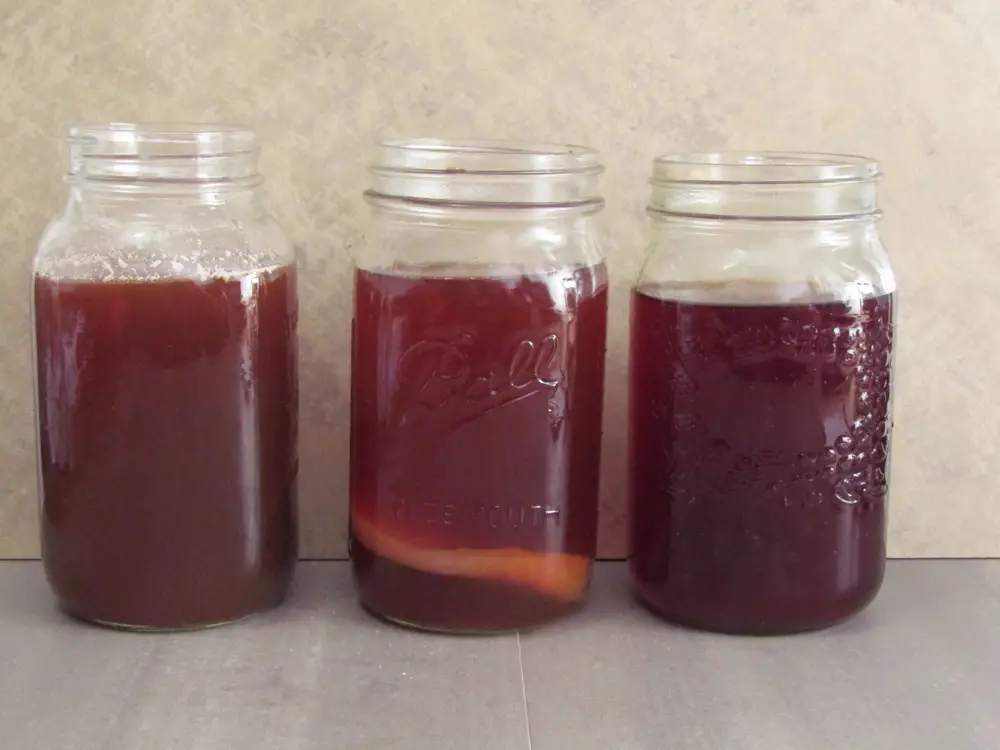This post contains affiliate links.
Although you do not need a SCOBY to start making kombucha, many kombucha brewers feel the need to include one in every one of their brews. A kombucha SCOBY is the cellulose mat which floats on the surface of the kombucha fermentation, it is officially called a pellicle. Pellicles are not unique to kombucha making but are also found in vinegar making (called the mother) and often limbic beer.
If you feel you need to have a SCOBY floating on the surface of your kombucha and you currently don’t have one, here are three ways to make your own SCOBY.
Grow a SCOBY by inoculating sweetened tea with raw kombucha
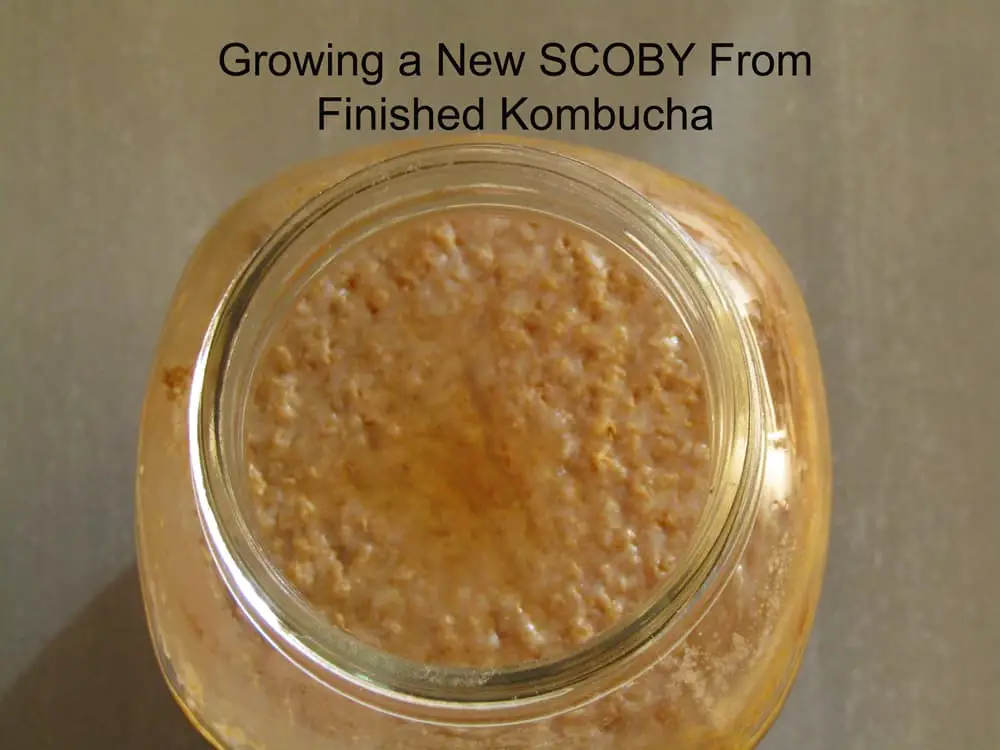
Inoculating sweetened tea with some raw commercial kombucha is called backslopping in fermentation circles. Backslopping is a method of transferring a fermentation culture from a finished batch to a new batch. It has been used in beer making, vinegar, yogurt and kefir (both water and milk).
Raw kombucha will have active culture in it which has the bacteria species which will produce the SCOBY within a week or two, depending on how active the culture is. It is not understood how or why the bacteria produce the SCOBY but by using a culture which has grown a SCOBY in the past will essentially guarantee a new one will grow on your first batch of Kombucha.
Once you have grown a SCOBY you can continue to use this method and you will find you are making a new SCOBY every time you ferment a new batch.
To grow your first SCOBY with this method you will need:
- A bottle of raw kombucha
- A large mason jar or similar glass container
- A cloth with an elastic band
- 3 bags of tea
- ¼ cup of sugar
The method is simple:
- Wash the jar with soap and water and rinse it well
- Pour the raw kombucha into the jar until it is a quarter full
- Make the tea and add the sugar
- Remove the bags and cool to room temperature
- Pour the tea into the container leaving an inch headroom
- Place the cloth over the lip and secure with an elastic band
- Place the jar in a warm location out of sunlight for two weeks
- Begin checking on the kombucha it should have a SCOBY growing on the surface
Why this works
A kombucha SCOBY is essentially a pellicle which is formed by two geniuses of acetic acid bacteria. These AAB produce a biofilm which collects on the surface of the tea. As the biofilm thickens other microorganisms get included in the biofilm making it a firm pliable mat which covers the surface of the liquid. If it is left undisturbed it will continue to thicken as the AAB add additional biofilm to the pellicle.
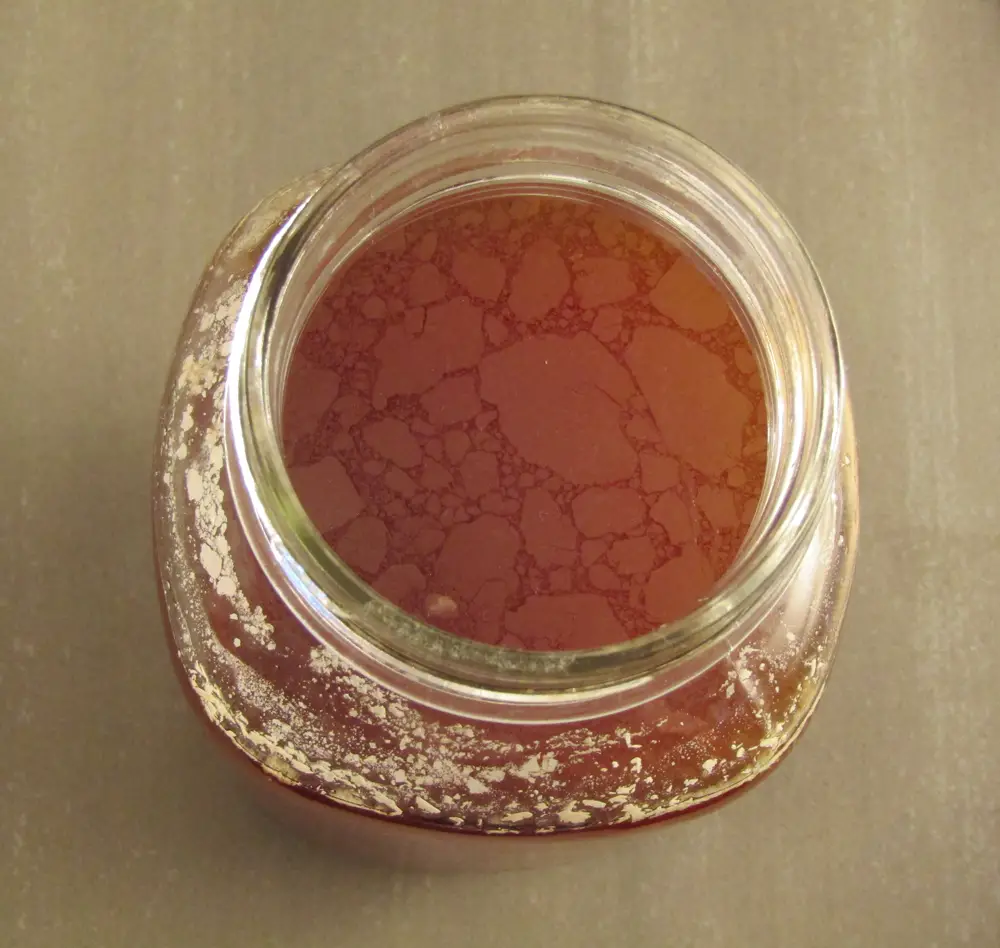
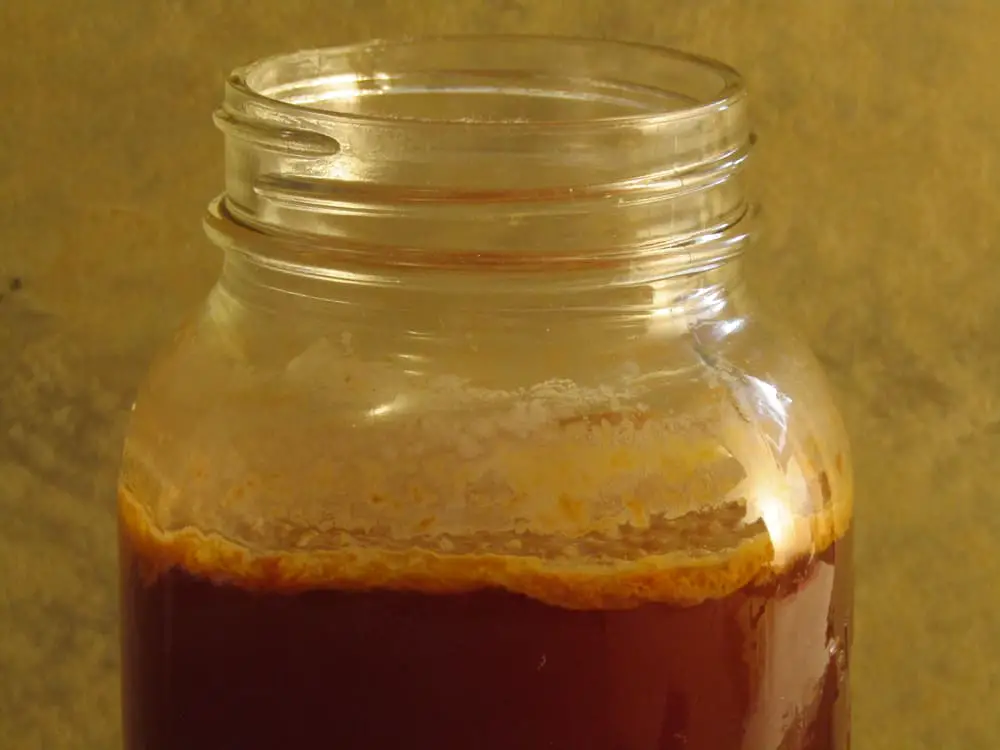
When you added the raw kombucha into the sweet tea you introduced the culture which was used to ferment the kombucha in the bottle into the new batch. The live microbial species which produced the commercial kombucha has the AAB species which form the biofilm needed for SCOBY production, in fact there is probably a small SCOBY forming in the bottle prior to you adding it to your new batch.
The kombucha culture will consume the sugar in the tea and produce a small batch with a SCOBY floating on the surface.
Use a vinegar mother to make a kombucha SCOBY
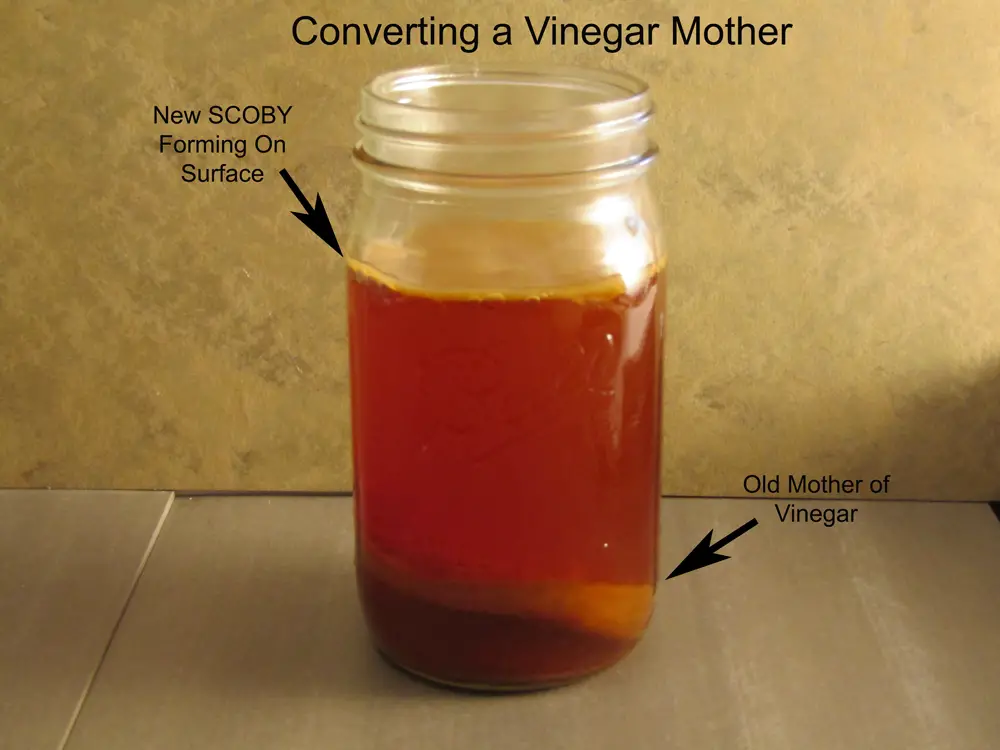
This method takes a pellicle from another fermentation altogether and converts it into a kombucha SCOBY. Our pellicle of choice is a vinegar mother. A vinegar mother is a pellicle produced mostly by AAB of the genus Komagataeibacter which is found in both kombucha and vinegar fermentations.
The difference between a kombucha SCOBY and a vinegar mother is the population of the various acetic and lactic acid bacterial species. The population of the various species of bacteria found in vinegar and kombucha varies as well as the sub-species of each.
The interesting thing about making kombucha (or any fermentation) is that the culture changes and matures depending on the conditions it finds itself in. A kombucha culture is different from a vinegar culture due mainly from the substrate which the bacteria find themselves in but every kombucha culture is different depending on its location, time of year and heritage.
This means that a vinegar mother used in a kombucha fermentation will change to better ferment the sweetened tea the culture finds itself in, in short it will change from a vinegar culture to a kombucha culture within a few batches.
When you add a vinegar mother to a new batch of sweet tea the culture found in and on the mother will begin to use the sugar to produce alcohol and acetic acid.
To convert a vinegar mother to a kombucha SCOBY you will need:
- A vinegar mother
- Finished vinegar
- A large mason jar or similar glass container
- A cloth with an elastic band
- 3 bags of tea
- ¼ cup of sugar
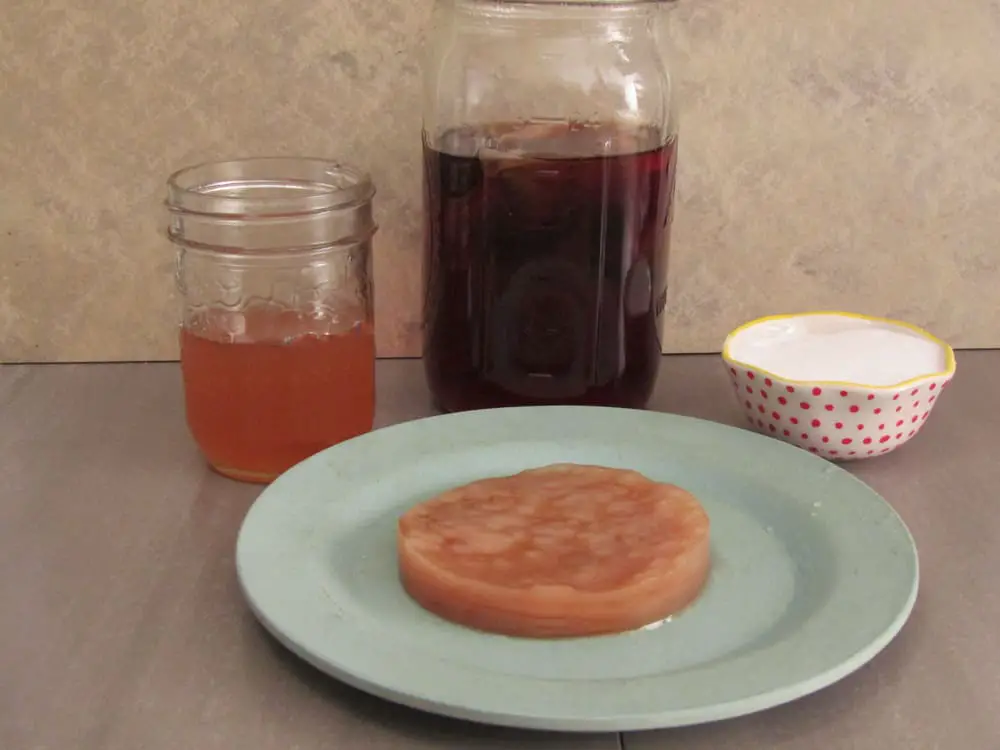
The Process
- Make the sweet tea
- Cool the tea to room temperature
- Fill the jar 1/8 full with your finished vinegar
- Fill the jar with the sweet tea leaving an inch of headroom
- Add the vinegar mother
- Cover with the cloth and secure with the elastic band
- Place in a warm location out of direct light for two weeks
Why this works
Vinegar and kombucha are both AAB fermentations. Many of the species which are found in vinegar fermentations are also found in kombucha and visa-versa. This is because vinegar and kombucha are exposed to the same environments with the same opportunity for the various microbial species to inhabit the liquid be it sweet tea or fruit juice.
When a vinegar culture is used to ferment sweet tea the population of the various cultures found in the mother and finished vinegar will shift. This is because the sugars, vitamins and minerals found in the fruit juice or other substrate used to make vinegar are different from those found in kombucha. As the species which can easily use the food energy in the sweet tea grow in population while other species decline.
Additionally AAB and LAB will enter the kombucha fermentation through the environment. No matter how careful you are to clean your equipment your fermentation will be exposed to bacteria and yeast found in the environment. They are found in the air, in the jar and any utensil you use to make the tea. These additional bacterial species may find a space for themselves if there is a food source for them and the environment is conducive to their growth.
This is not a bad thing! When kombucha SCOBYs were examined from various locations in the world they all had a different microbial makeup. This means that each SCOBY takes on some of the characteristics of its location. This makes each one unique. As it matures it will alter its microbial population to best suit its environment.
After a few batches the culture will have balanced out and will make fairly consistent kombucha.
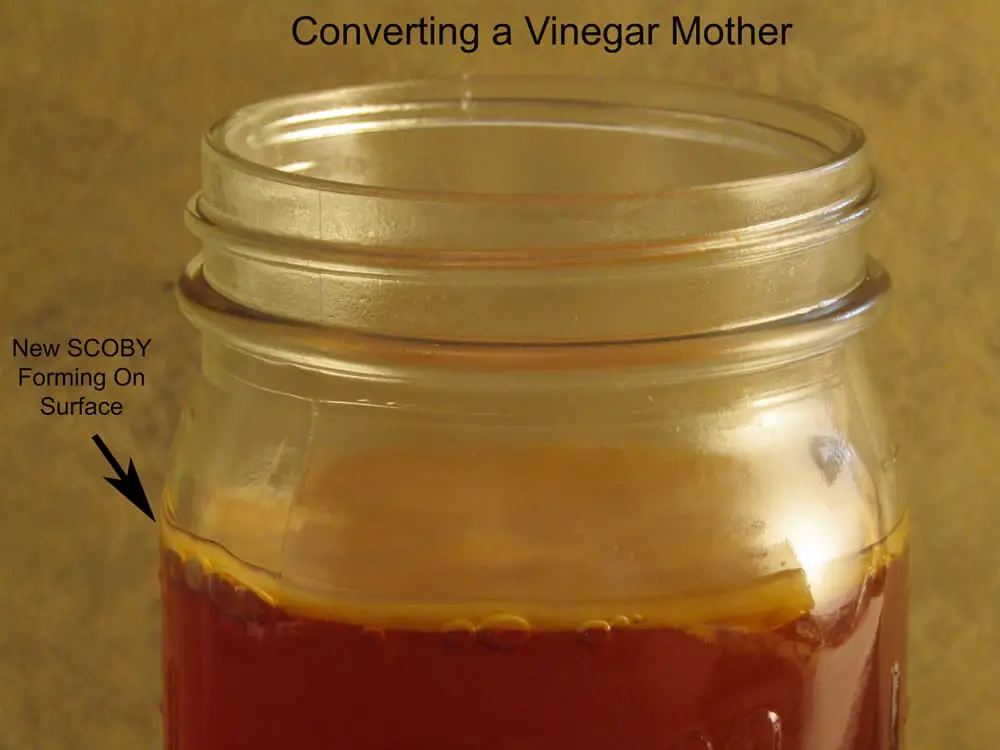
How to make a SCOBY using wild fermentation
Of all the three methods this is the most time intensive and requires patience. This method uses the fact that a kombucha fermentation is basically a set of microbial species which have similar needs for environmental conditions, food sources and have overlapping acidity tolerances.
To start a kombucha SCOBY from scratch using wild fermentation your job is to furnish the correct environment to encourage the growth of the microorganisms you want and discourage those you don’t want. To do this you will have to be much more involved in the process than the other two methods above.
Using wild fermentation to start a kombucha SCOBY will produce a unique kombucha culture which will be populated by only yeast, acetic acid and lactic acid bacteria which are present in your environment. Since most kombucha cultures are made from existing cultures there can be many bacterial species in the culture which are not found in your environment.
You will need:
- A mason jar or similar container
- A cloth and an elastic band
- Three tea bags
- 1/3 cup of sugar
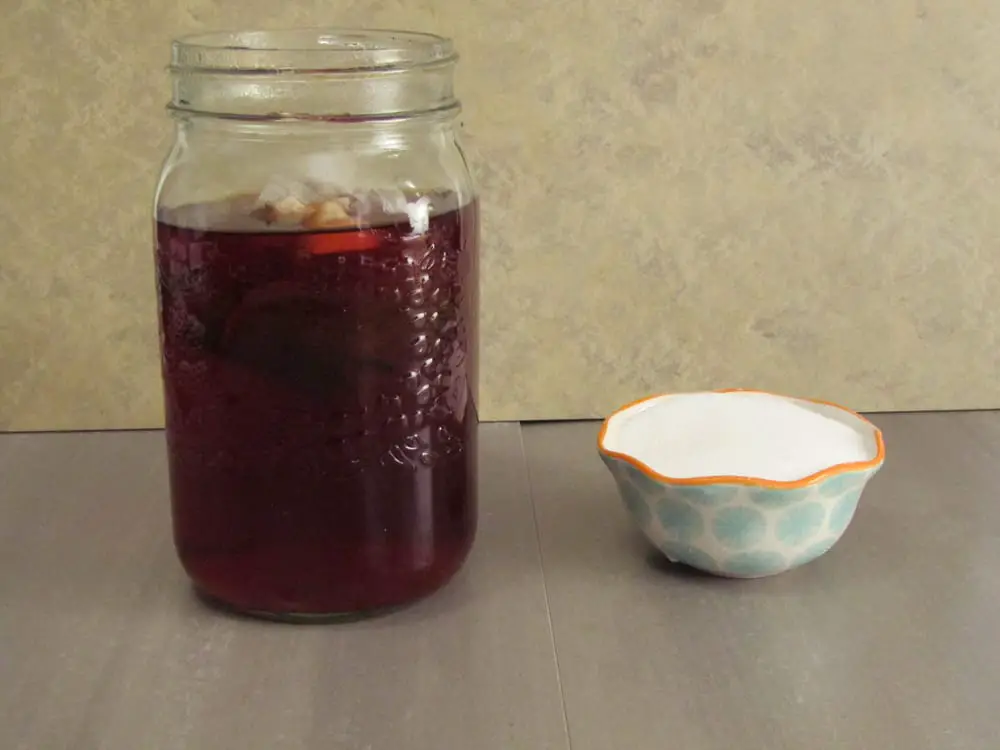
The method:
The first stage:
Grow the yeast population
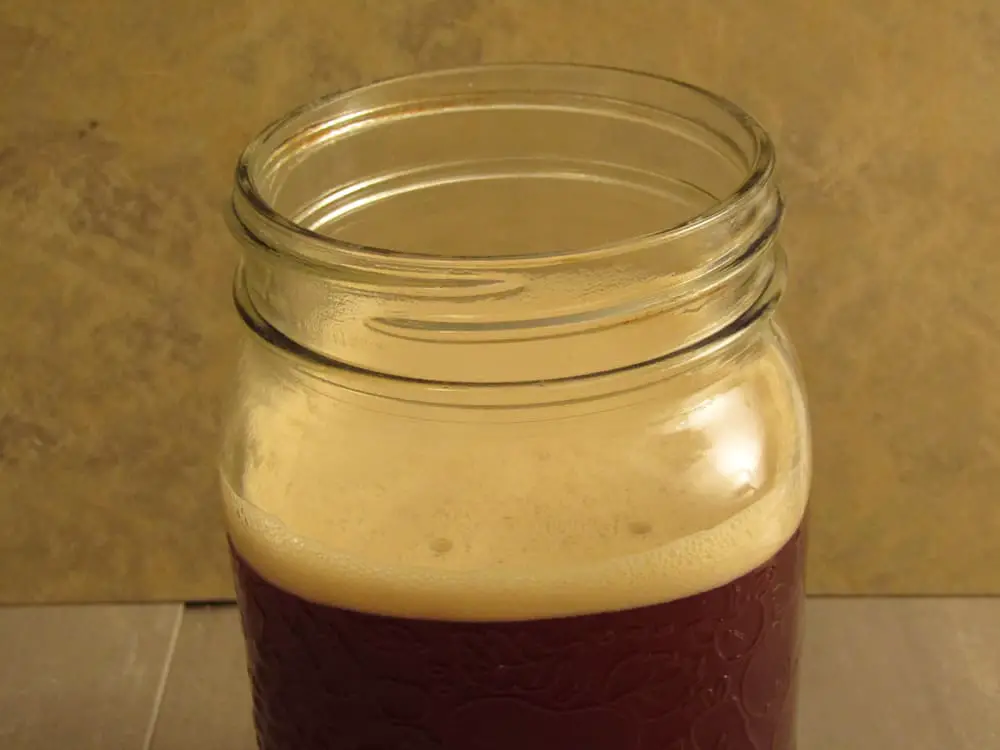
In the first stage you will want to promote the growth of the yeast species found in your environment. It is the yeast species which produce the alcohol used by the AAB in a kombucha fermentation and the wider variety of yeast species the better.
Each wild yeast species produce different vitamins, enzymes and esters which feed a wider variety of bacterial species and will add flavor to your kombucha.
To promote the growth of wild yeast you must provide a warm oxygen rich environment for the yeast. Once the yeast population starts to multiply it quickly dominates the tea and produces enough alcohol for the AAB to begin to grow.
Grow the acetic acid bacteria
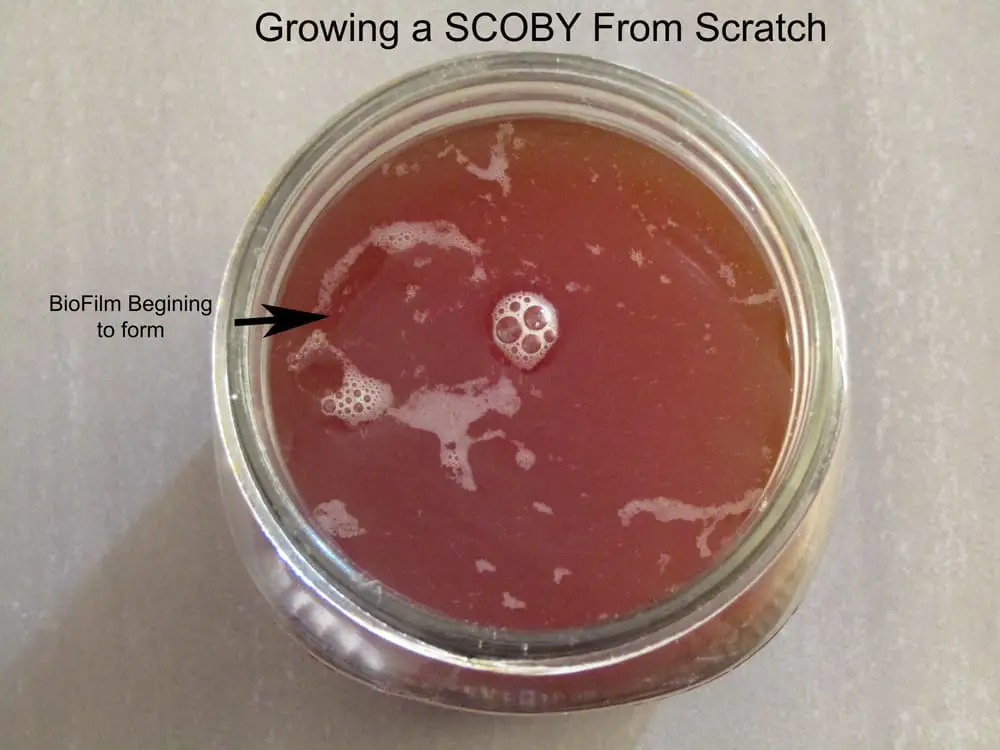
The AAB that you want to promote consume alcohol to produce acetic acid and CO2. Therefor to promote their growth they will need a base alcohol level of about 2-4%. This is less than that used to make vinegar but it is about the alcohol level found in a kombucha fermentation in the early stages.
Once the yeast has started to produce alcohol oxygenate the tea to encourage the growth of the AAB which are aerobic microorganisms.
Follow these steps to complete the first stage of new SCOBY growth:
- Make the sweet tea
- Remove the tea bags when tea has finished steeping
- Cover with the cloth and elastic band
- Place the jar in a warm location out of direct sunlight (25-30˚C)
- Stir your sweet tea twice daily until you see some bubbles forming on the sides of the jar
- Once you see bubbles stir your tea only once a day for a total of ten days
After the first ten days the yeast will have dominated the tea and increased the alcohol level above 2% and resident AAB will have started to convert the alcohol into acetic acid. This makes for an environment which will inhibit the growth of mold and other non-acidic tolerant bacterial cultures.
The second stage:
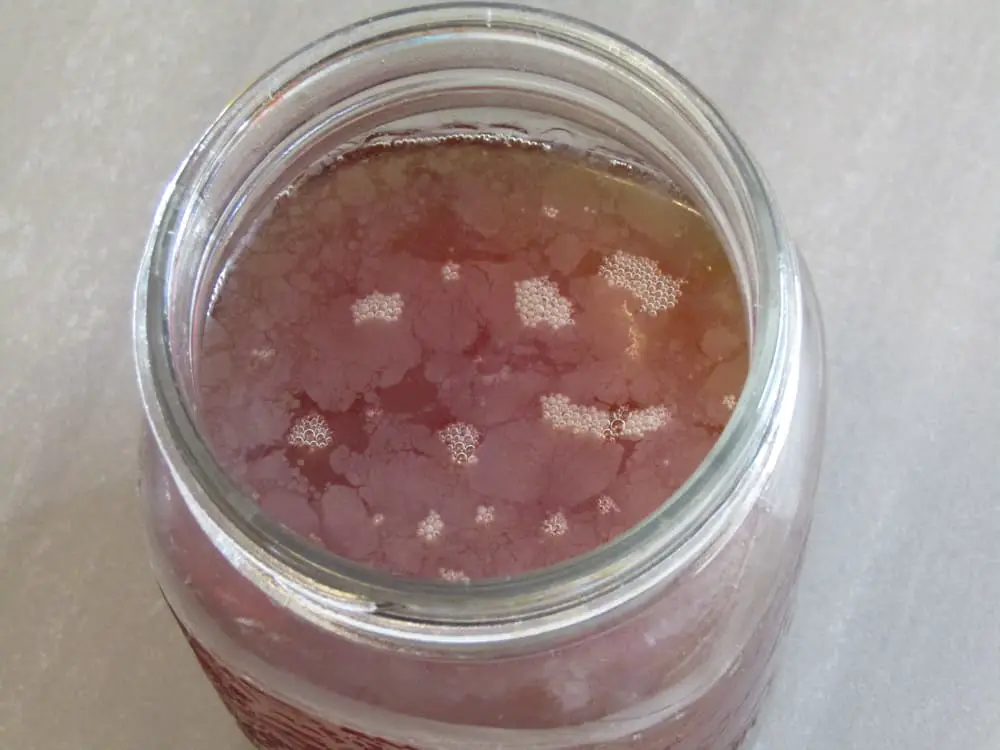
It is now safe to leave it alone while the AAB form the SCOBY on the surface of the jar. Place the jar in a warm location out of direct sunlight and leave it alone for two weeks. At the end of the two weeks inspect the kombucha. It should have a thin film on the surface of the tea and the tea should smell acidic. This is an indication that the AAB are acidifying the tea and starting to produce the needed biofilm which will eventually form your SCOBY.
At this point you can begin tasting the tea which should have an acidic sharp flavor. Once it is suitably tangy remove half of the kombucha from the jar and refill it with more sweet tea with the same concentration of sugar from the first step.
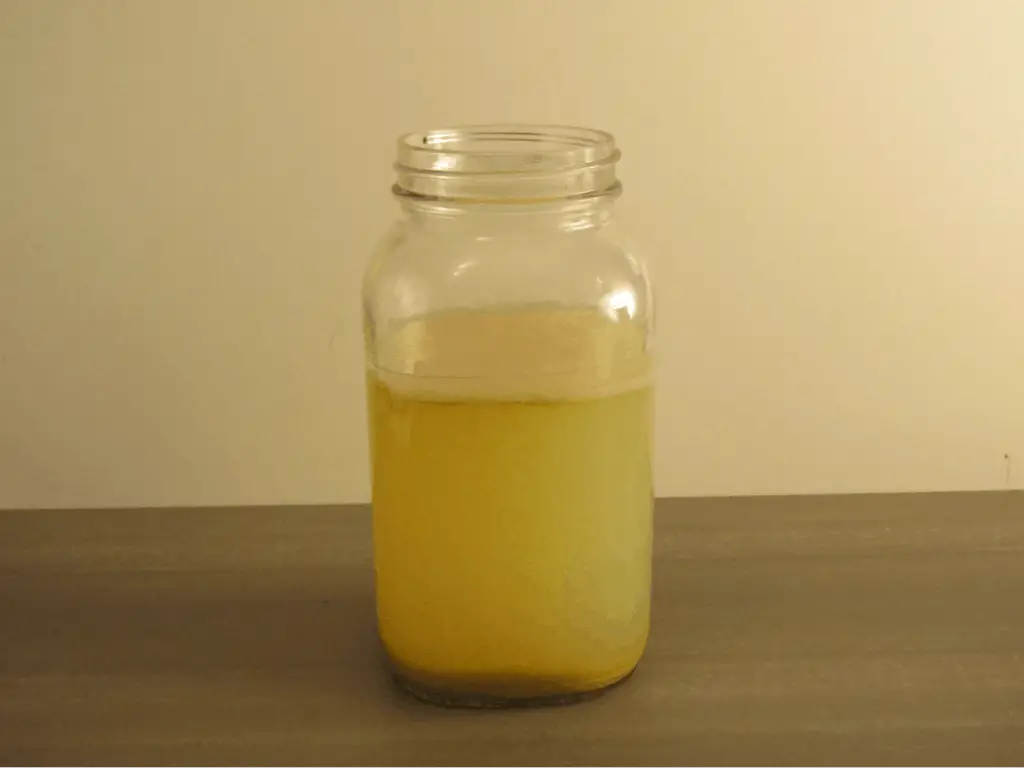
Let it ferment another two weeks. At this point your new SCOBY should have formed on the surface of the jar. You can now use the SCOBY and the contents of the jar to inoculate a larger batch of kombucha or drink the kombucha and use the SCOBY to make another batch the same size.
Why it works
There are three families of microorganisms which dominate a kombucha culture, yeast, acetic acid bacteria and lactic acid bacteria. All three of these types of microbes are found in every environment in the world. They are prevalent in our air, on kitchen surfaces and utensils.
They travel as spores, on the legs of bugs and as aerosols in the air. When you stir your kombucha you are doing three things:
Add additional yeast and bacterial species into your sweet tea
Each time you stir the tea you are mixing in yeast and bacteria which are found in your environment. It is these microbes which will convert the sugar into the various alcohols and acids which make kombucha such a unique drink. The yeast responds quickly to sugary warm environment and multiply quickly.
Oxygenating the tea
Most yeast species are more efficient when they have access to oxygen so when you stir the tea you are helping them to multiply quickly. Once the population of the yeast has passed the lag period you no longer have to stir twice a day. Now you want the yeast to be less efficient which will force it to produce more alcohol. This alcohol will be used by the AAB to acidify the tea.
Stirring it once a day helps the AAB to grow quickly once the yeast has begun producing alcohol. AAB are aerobic bacteria and stirring helps to encourage fast growth. As the AAB population increases the acidity of the tea drops.
Inhibit mold growth
The yeast reduces the sugar content in the tea quickly and produces alcohol. As the sugar content in the tea declines mold is less likely to grow on the edges of the container. The alcohol also inhibits the growth of mold.
Each time you stir the tea you disturb the surface which further inhibits the growth of mold while the yeast population is low. This is why you want to stir it twice a day until it starts to bubble. Once it is bubbling the yeast is active enough to inhibit the mold on its own.
Once the AAB have had a chance to acidify the tea you want to leave it alone to begin to form a new SCOBY. The biofilm which is the main component of a SCOBY forms on the undisturbed surface of the tea. Leaving the tea alone allows the SCOBY to form.
The three types of microbial make up kombucha
There are three types of microbial organisms found in kombucha, yeast, LAB and AAB. These three cultures work together to convert the sugar and tannins provided by the tea into tangy kombucha.
Yeast growth in kombucha
In the first step of growing your own SCOBY the sweet tea has few microbial species in it due to the boiling water used to steep the tea but once it cools and you begin to stir it each of these three microbial families start to grow in population.
The yeasts are the first to dominate the culture as they find it easy to metabolize the sugar and convert it into alcohol. At this point the culture has no balance as the yeast species are low in population and are not competing for food with any other yeast or bacteria.
Lactic acid Bacteria growth in kombucha
The LAB also consume the sugar in the tea and begin to increase in population and contribute to the flavor and acidity of the tea early on. As the sugar is consumed they begin to compete with the yeast for food and space in the fermentation.
Acetic acid bacteria growth in kombucha
Once the yeast and LAB begin to produce alcohol and lactic acid the AAB begin to grow. AAB can use both the alcohol and lactic acid for food energy and produce acetic acid. This protects the culture from mold growth as most mold species prefer a basic environment.
How the yeast, LAB and AAB work together in a symbiotic relationship
As the culture matures the population of the microorganism species changes. Yeast species which are better suited to the type of sugar or type of tea you are using will grow faster than those which prefer other types of sugar and tea. The same will happen with all the species.
It has been discovered that kombucha made with different tea bases have different dominate species of yeast, AAB and LAB. This indicates that the substrate (type of liquid) that a culture grows in influences the population of the various species found in it.
When a new AAB, LAB or yeast species is introduced into the culture it must be able to carve out a niche for itself by competing with the other species already growing in the culture. This makes it difficult but not impossible for other species to be introduced into an established kombucha culture.
Any newly introduced microbial species must find a niche to fill which:
Has enough food energy for it to survive
All microorganisms need food energy so if a newly introduced species cannot find enough food to grow it will not survive. Each species has different needs and tolerances which provides a natural balance in a Kombucha consortium.
Does not directly compete with another established species
A newly introduced species must have few or no competitors in its niche. Otherwise the already established species will over compete and limit or eliminate the growth of the new species.

